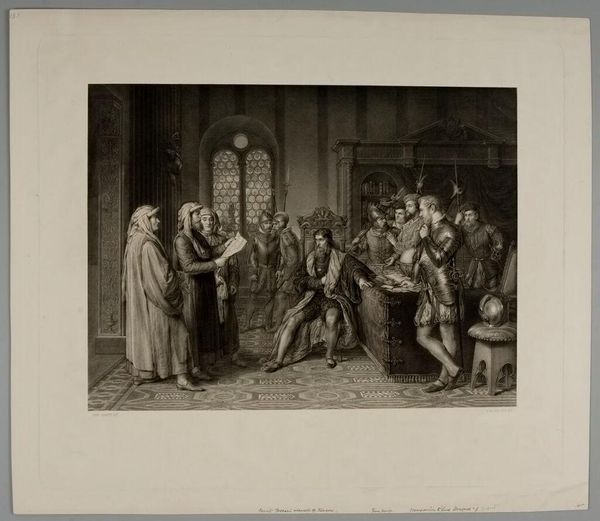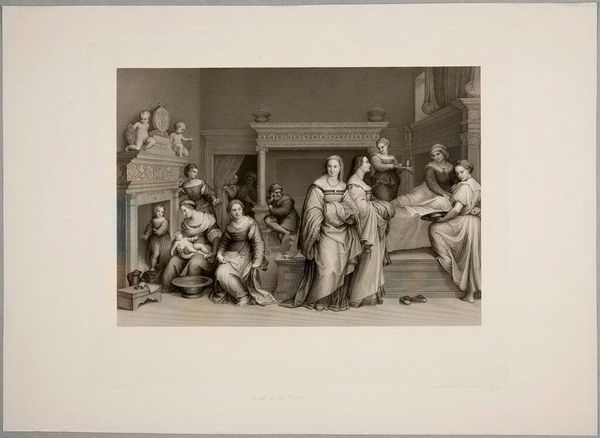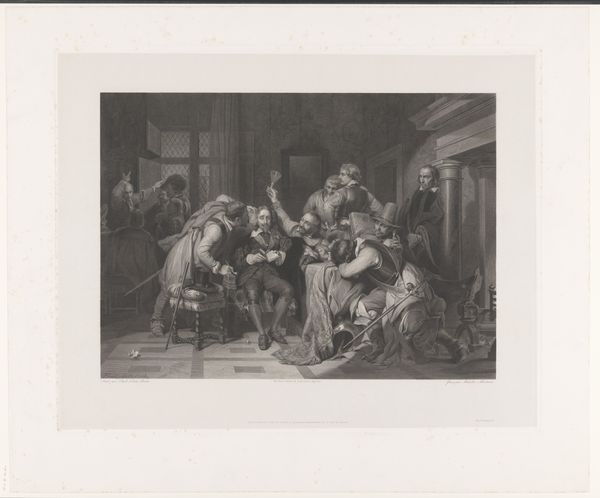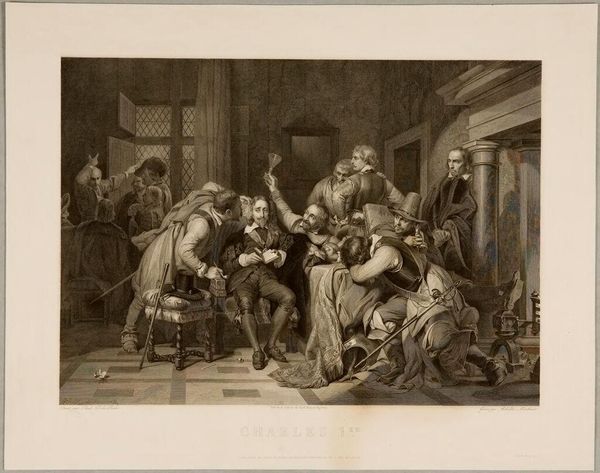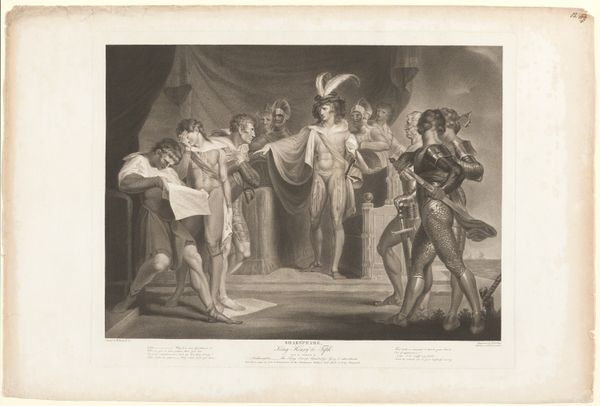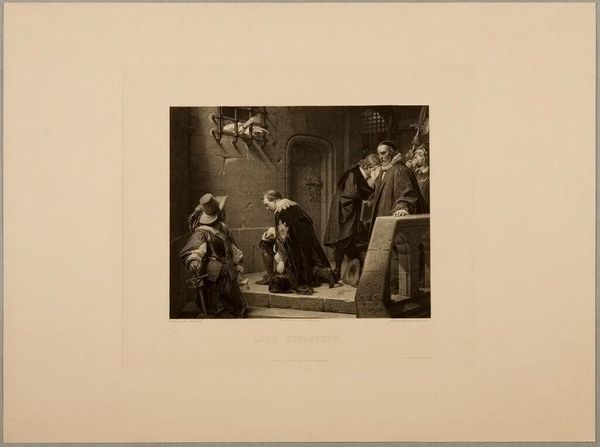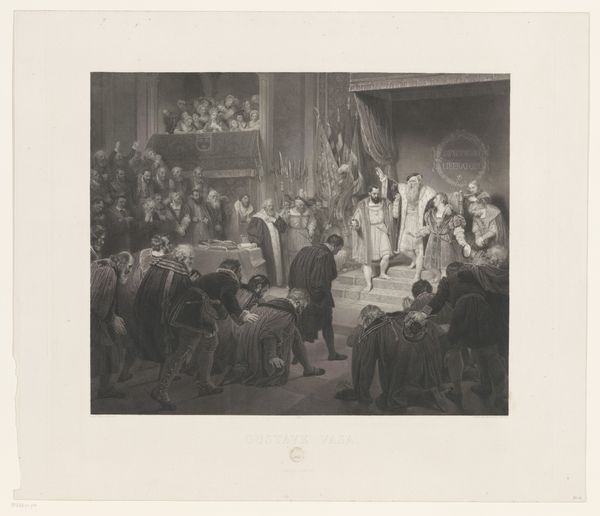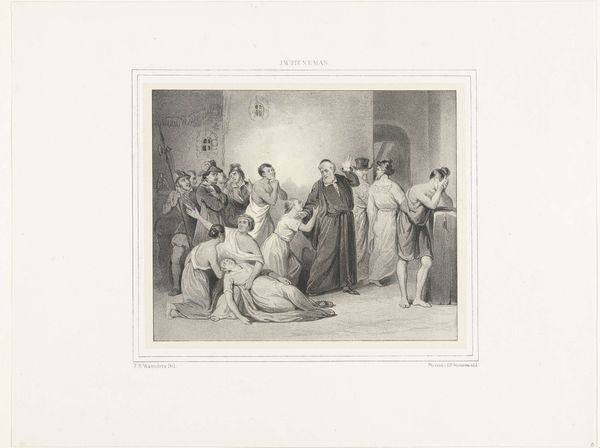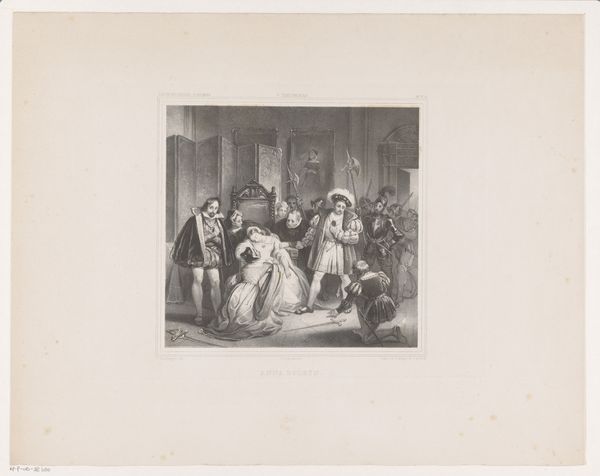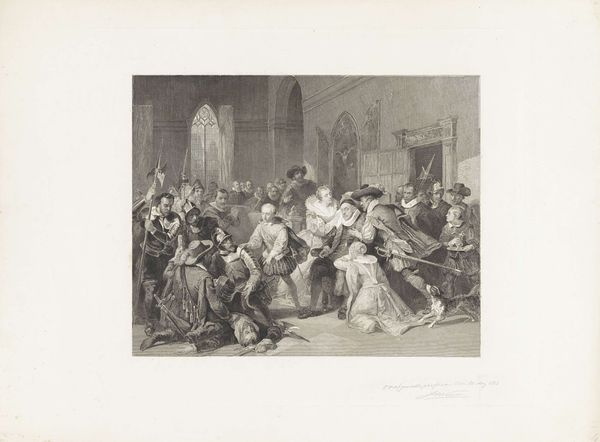
Charles the First (In The Guardroom of Cromwell's Soldiers) c. 19th century
0:00
0:00
Copyright: CC0 1.0
Curator: Achille Louis Martinet gives us "Charles the First (In The Guardroom of Cromwell's Soldiers)," a scene thick with tension. Immediately, I’m struck by the claustrophobia, the feeling of being cornered. Editor: The composition itself speaks volumes, doesn't it? The contrast between Charles, seated and seemingly composed, and the boisterous soldiers…it’s a potent visual statement. I can almost hear the clatter of their gear. Curator: It's that very contrast which captivates me. The weight of history, you know? Charles, a king stripped of his power, yet retaining a fragile dignity amidst the revolutionary fervor. You can almost feel his quiet defiance radiating outwards. Editor: Indeed. And let's not overlook the material implications. Martinet, working likely from an earlier painting, reproduces the scene through engraving. This process democratizes access, transforming a royal drama into a consumable print for the masses. Curator: I always thought this image revealed the profound human drama underlying those shifts in power, regardless of class—an intimate portrayal of fallen majesty. Editor: Perhaps. But, it's also a manufactured image intended for consumption. The very act of its making and distribution has political and social implications, reshaping the narrative of the English Civil War. Curator: Ah, well, it's fascinating how one picture can hold such different worlds. It’s not just history, it's also a lens through which we view our own world. Editor: Precisely. And the means by which that lens was constructed matters as much as the image it projects.
Comments
No comments
Be the first to comment and join the conversation on the ultimate creative platform.
